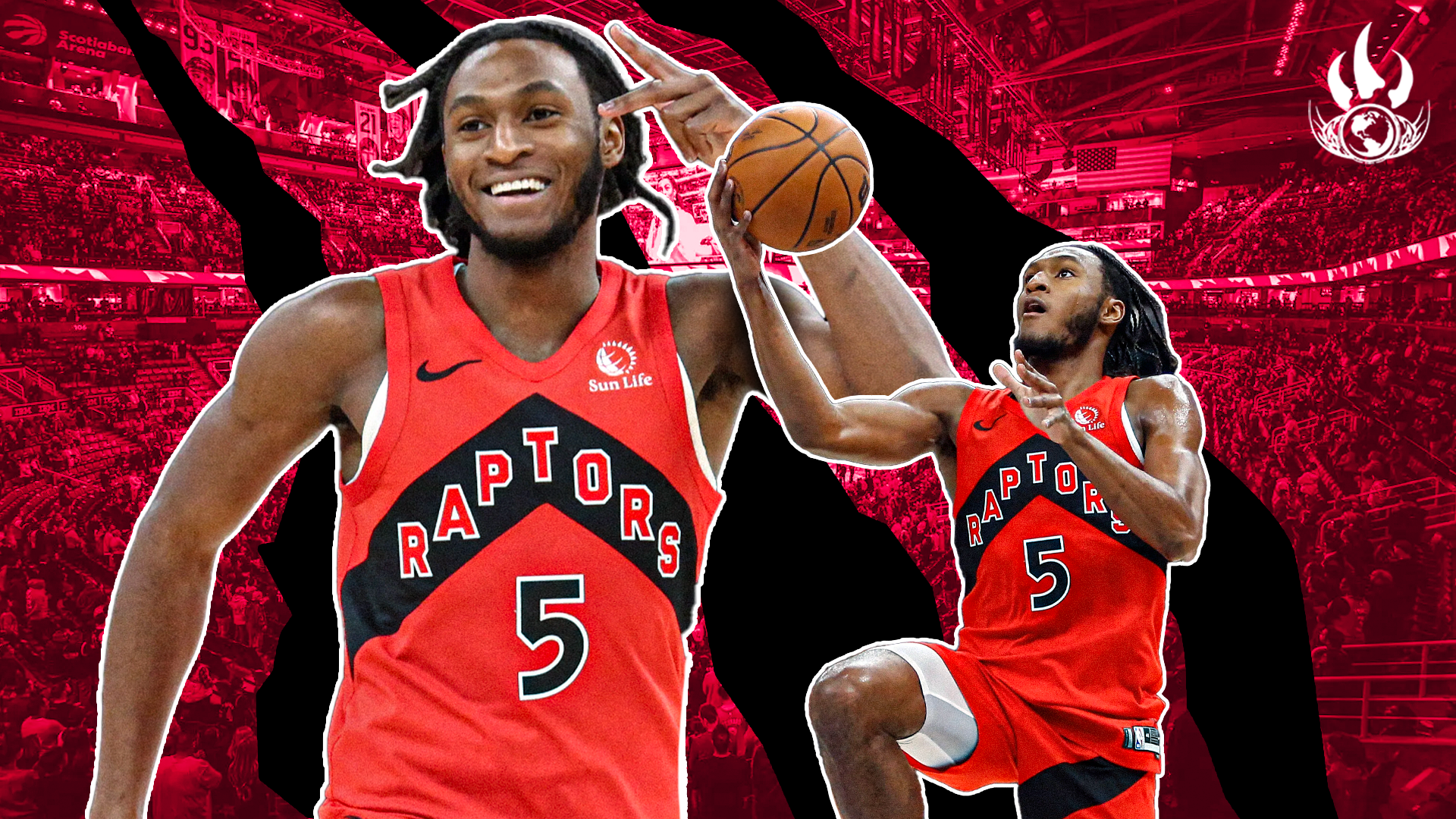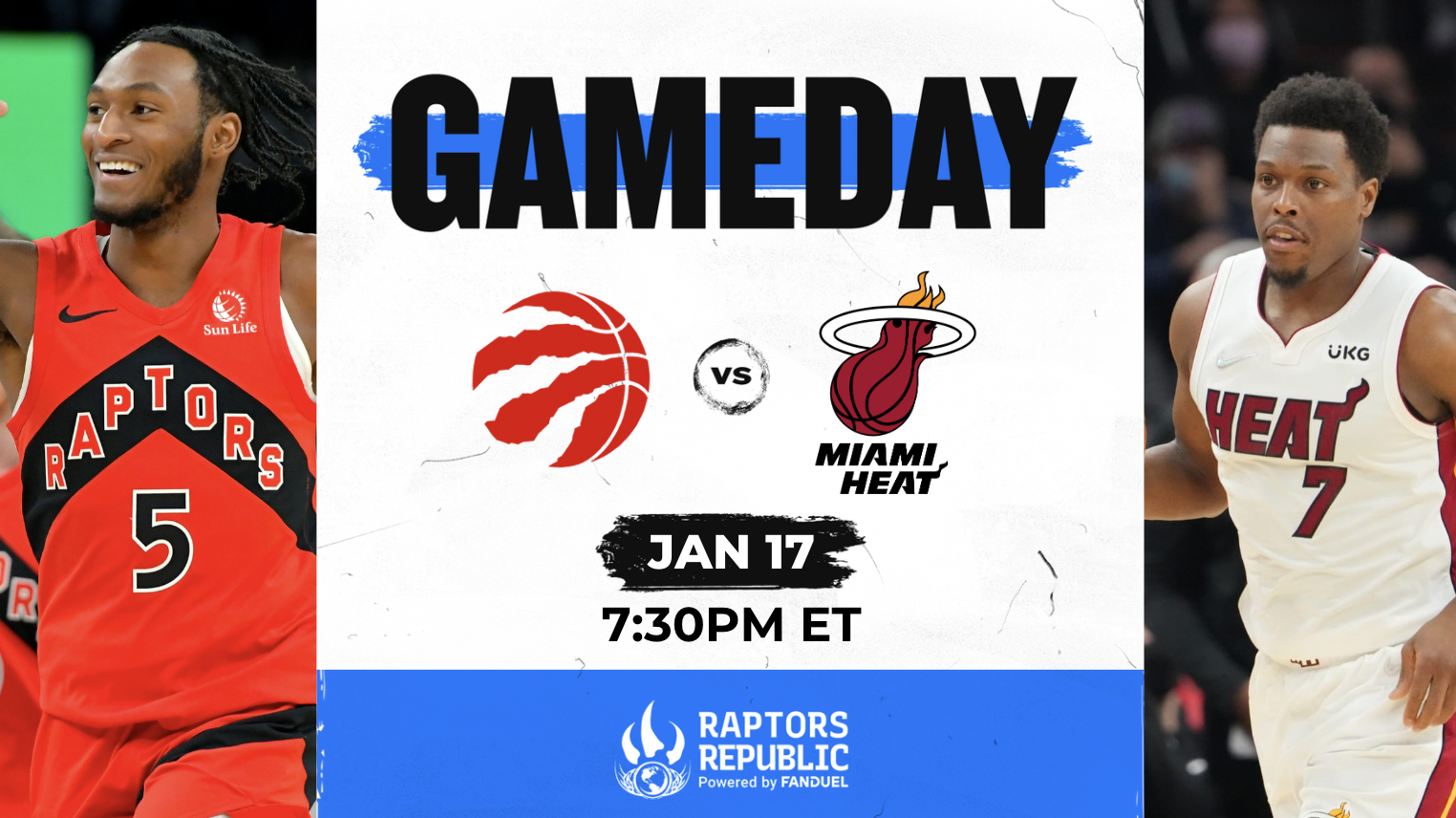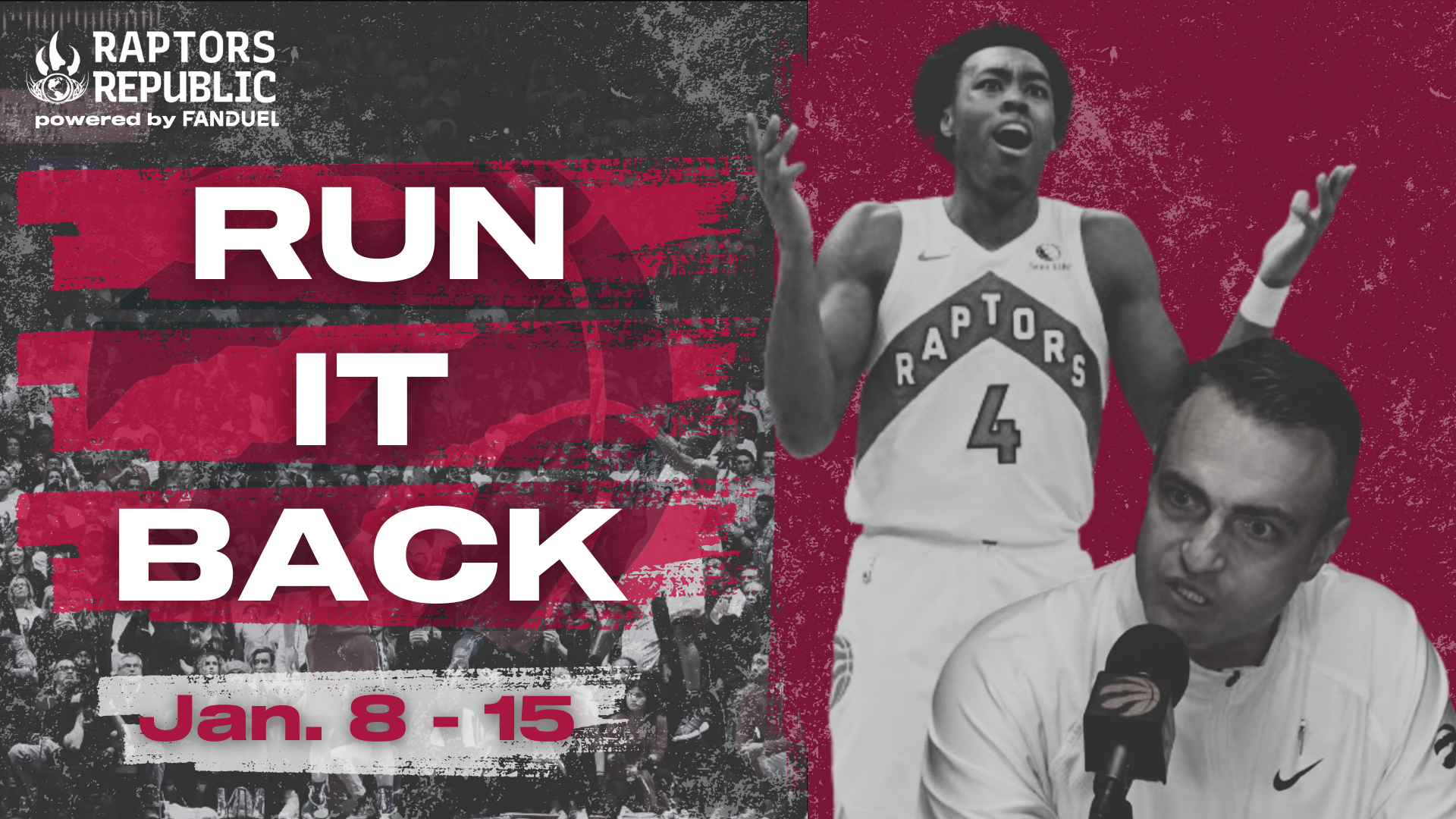Versatility across the NBA court extends to much more than just shooting and defense. Nowadays, everyone has to do everything. Centers have to shoot, yes. But so too do guards have to be able to set hulking screens. Modern basketball involves constant motion, and it’s much easier to create space for yourself after doing so for others. It’s one of Steph Curry’s greatest superpowers, and the league is still residing in his shadow.
When a guard can move someone else’s defender by setting a screen, that buys him extra space if that defender tries to switch onto him. It opens
When Quickley sets flex screens for Pascal Siakam, it frequently gives Toronto an open pass down to Siakam in the paint for a layup. He’s fantastic at catching in a crowd — he’s always been an elite wide receiver ever since his transition-only days as a rookie starter — and with his second jump and touch, it’s an automatic bucket. There’s no better play in basketball than one that ends there. That all starts from Quickley’s ability to move defenders at his size.
But if the pass doesn’t come, perhaps because the defense overplayed the action, Quickley is phenomenal at jetting across the court to receive the ball in a dribble handoff and either fire or run his own action. Whether it’s a back screen turned into a dribble handoff (back DHO) or a flex DHO, the principle is the same. (The back screen used to open a number of lobs for OG Anunoby especially, but the flex screen is more for Pascal Siakam as a post entry.) He has open space in such moments largely because of the space he bought for Siakam and Barnes.
“The guys we have like Scottie and Pascal, to try to free them up and get easy buckets I think is pretty big for our offence,” explained Quickley. “And because they’re such great offensive players that frees me up, so it’s not necessarily just myself but having great teammates around me that can score makes it easier for me.”
If defenses lose attention for even a moment, there’s a layup for Siakam or Barnes, or a movement triple for Quickley. And even if they play properly, the play flows immediately into a pick and roll for Quickley against a moving defense. That’s no poor thing for a third option out of a play.
This is very much filtering basketball down to grains of sand, but Quickley since arriving in Toronto has set the second-highest frequency among guards in the league for back screens and flex screens that create real contact. He is also in the top 20 for efficiency on such plays. This is a play to which Toronto has been turning a handful of times every game, and it’s quite likely that we’ll soon see a clutch game in which Toronto runs Flex DHO or Back DHO three or four straight times to close out their opponent.
Fascinatingly, Quickley’s other off-ball screens have not been particularly effective. That’s perhaps more a reflection of Toronto’s coaching choices than anyone actually on the court; Toronto doesn’t really run other Quickley-screening actions with the intent to score. Within the normal flow of a motion offense, Quickley will also set flare screens, or pindowns, but they’re usually fluff. Those aren’t as often scripted plays, and they’re certainly not ones in which Quickley is the main threat. If he’s setting a back or flex screen? Yeah, better get ready to defend your tuchus off if you’re his defender. Otherwise, you can mostly chill.
Screening is about more than just transference of space on the court. It can also be about dictating matchups:
“I think [guard screening] really important, especially as we’re trying to get the right matchups,” said Joe Mazzulla. “Having those guys know how to screen versus difference coverages is something we talk a lot about. We have to be able to force matchups in disadvantaged situations… I think you have to be able to have guards who can do that.”
It’s a good thing for Toronto that Quickley isn’t limited purely to off-ball screening. He doesn’t set a league-leading rate of on-ball screens, as he does with some off-ball ones, but he still burns down the league when he’s screening on the ball. Among guards with at least 20 on-ball screens set, no one has averaged a higher points per chance when screening on the ball than has Quickley with the Raptors.
He doesn’t have many touches after setting on-ball screens, but he’s 2/2 from deep on the few opportunities he has.
Quickley is such an insane shooter that Toronto should probably look to ramp up his on-ball screening, particularly for Barnes. The 4-1 pick and roll was long Toronto’s signature closing play for Siakam and Fred VanVleet, and it could be even more potent for Barnes and Quickely once the two learn each others’ games. I would be surprised if they’re not running such plays a handful of times a game by the end of the season. And if Quickley is getting open after setting an on-ball screen, whether ghosting it or setting solid contact, it’s because of a defensive mistake.
But in order to not make that mistake, defenses need to make a host of sacrifices. To keep Quickley’s touches minimal in those situations, defenses shift, often switching, allowing Toronto’s jumbo wings in Pascal Siakam and Scottie Barnes room to operate. When he is a pass away, there’s no dig coming from over the top. Siakam and Barnes can dust isolation defenses, and Quickley screening gives them the best chance to face that. Defenses can play the “shift” or “next” or even “switch to blitz” to both disallow Barnes (or Siakam) from isolating against a small and stop Quickley from getting a touch when he pops. But those options all come with issues as well, largely because they could put the defense in rotation against a team that doesn’t have a host of other ways to accomplish that. In those moments, Toronto should look to find RJ Barrett and let him attack the widening lanes. The point is that no matter what, Quickley as an on-ball screener will pry something open.
Raptors’ fans should know that this is nothing new. Kyle Lowry and Fred VanVleet after him were both great screeners. But look beyond Toronto, and you’ll see virtually every team with a strong guard screener or two. It’s vital in a variety of ways. It keeps motion and pace high having a movement shooter who can dish out the pain before jetting into space. It also allows a team to thrive in the muck of stasis, forcing a switch, and creating an easier situation in isolation. A strong guard screener is almost a prerequisite to good offense in modern basketball.
It’s a good thing for Toronto that Quickley is one of the best there. There are certainly improvements to be made. He has not been particularly effective attacking switches. That’s because he hasn’t been driving or finishing very well, and he often settles for a floater no matter who is guarding him. He also hasn’t been taking nearly enough triples in a Raptors’ uniform, especially pull-ups when given a sliver of space. Quickley will need to be more selfish, but it’s no surprise that he hasn’t — he’s learning the point guard position, and he’s trying to ensure others are involved. It’s hard to know when to call your own number and take difficult, off-the-dribble shots without derailing the flow of the offense. Barnes’ 3-point jumper has quietly been regressing, as he’s now at 32.5 percent from deep since the trade. If he’s not launching pull-up triples when Quickley draws the defense in the 4-1 pick and roll, or he’s not hitting catch-and-shoot triples when Quickley draws the defense with his off-ball screening, then the dynamism of Quickley’s abilities are somewhat blunted.
Those issues are minor in comparison to the reality that Toronto has a few signature plays that are dangerous no matter the defense chooses to do. Quickley has been Toronto’s most frequent pick-and-roll operator since the trade, but the Raptors have been even better when Quickley doesn’t open plays with the ball in his hands, when he sets screens all around the court before his catch or just to free up teammates. Versatility is not just good, but vital in today’s NBA. And the Raptors once again have a guard who is dominant with or without the ball in his hands.



